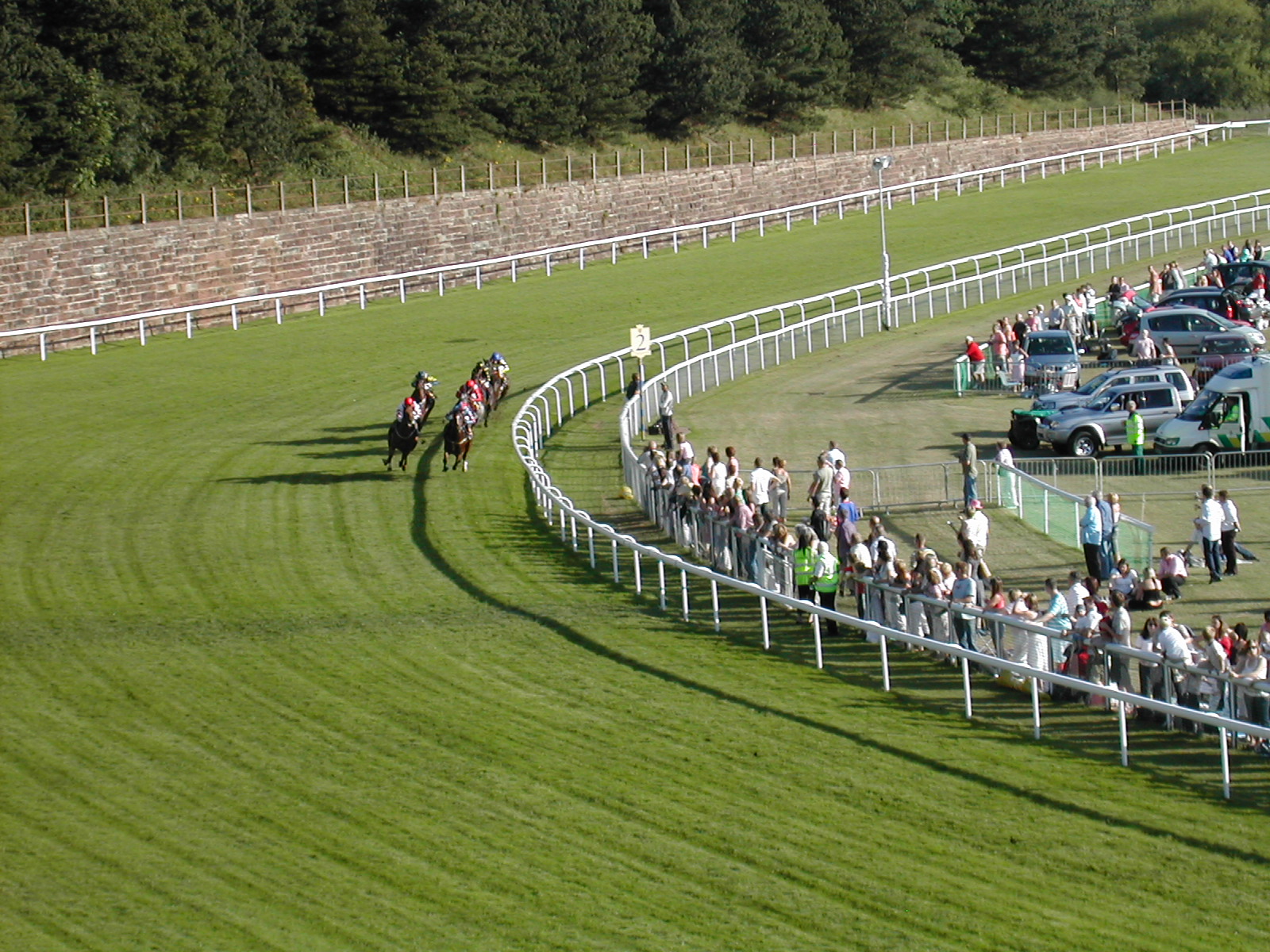
Horseracing in North America is conducted over both dirt and turf (grass) surfaces, with the majority of races being conducted on the dirt (there are also a few rare synthetic-based surfaces).
While you might think dirt is dirt and turf is turf, the condition of these two racing surfaces can vary dramatically and it is these differences that are important to the handicapper. Different horses may prefer different surfaces and different track conditions. It pays to know which horses like what.
A horse that is an ordinary performer over a dry (fast) dirt surface might be a monster over a wet and sloppy dirt surface. A horse that loves firm turf might be a washout on a yielding turf course.
Every time a horse races, numerous data items are collected from the performance. These items include, among other items, the date of the race, the host track name, race number, track condition and surface (if turf). This information is published in the past performances (horse’s racing history) found in the racing form or track program, at the beginning of each racing line.
When you are handicapping the races for the day and you know the racing surface is wet and sloppy, you’ll want to look through the past performances to find horses that have performed well over sloppy or wet tracks in the past. If you’re handicapping for yielding turf, you’ll want to look through the past performances for horses that have performed well over a yielding turf course in the past.
Although these are relatively simple handicapping angles, you’d be surprised by the number of times horses in poor form win at big odds – simply because they have shown an affinity for that day’s particular surface or track condition somewhere in their past performances. A horse with a number of poor races in its past performance lines will scare away many bettors even if it has some better-than-average performances over today’s surface. This can result in excellent overlay odds for sharp handicappers.
Examples of track condition and racing surface in past performances
Dirt Racing Surface
12Jly01-8GP fst indicates that this horse ran on July 12, 2001 (12Jly01), in race eight (8) at Gulfstream Park (GP) over a fast (fst) dirt surface.
Turf Course
22May02-6Bel fm 7f (T) – indicates that this horse ran on May 22, 2002 (22May02) in race six (6) at Belmont Park (Bel) over a firm (fm) surface going seven furlongs (7f) on the Turf (T).
Dirt Track Conditions
Fast – Horses generally record their fastest times over dry surfaces, so some genius somewhere decided to label dry dirt tracks you guessed it – fast.”
Wet-Fast – A wet fast surface produces fast times, but over a track with moisture on top. A thin layer of water over a dirt surface that produces fast times could be labeled wet-fast.
Good – A drying out dirt surface that is producing slower times than a fast track would.
Muddy – A wet, deep dirt surface.
Sloppy – A dirt surface covered in water generally enough to produce splashing when the horses run.
Frozen – A dirt surface that contains moisture that is frozen – a very hard surface.
Slow – A deep, drying out dirt surface that is producing slow times.
Heavy – A deep, wet, heavy dirt surface that is tiring to run on and produces very slow times.
Turf (Grass) Course Conditions
Firm – A dry turf course with a slight give to it (corresponds with fast on a dirt surface).
Good – A relatively firm turf course containing some moisture and slightly more give.
Soft – A turf course that contains a good amount of moisture and substantial give.
Yielding – A very wet turf course that is deep and produces slower times.
Heavy – A deep, heavy and often waterlogged turf course that produces very slow times.
Handicapping angles based on racing surface and track condition
Horses that show an affinity for a specific racing surface or track condition are likely to continue to do so throughout their racing careers. Horses that have run well over sloppy dirt tracks will continue to perform well over sloppy dirt tracks (assuming they are suited to the other conditions of the race). Horses that have run well on good turf courses will continue to perform well on good turf courses (also assuming they are suited to the other conditions of the race).
With this in mind, the dirt and turf course conditions should always be checked before handicapping the day’s races. Each horse’s past performance lines should be checked for good races over the current racing surface and track condition.
Beyer Speed Figures – These bolded figures appear just before the running lines in the past performances. They take into account the speed of the racing surface on any given day, to produce a number that accurately describes both the quality of a performance and how fast a horse has actually run.
A fast dirt surface one day may be quite different from a fast dirt surface on another day. A dirt surface accurately termed fast on one day may be hard and shallow, resulting in very fast times. The same dirt surface on another day may also be accurately listed as fast, even though it is slightly deeper and producing slower times. Beyer Speed Figures take these differences into account to produce one figure that gives a more accurate indication (than actual final time) of how fast a horse has run.
Beyer Speed Figures should be used instead of final times when comparing performances over similar surfaces and track conditions.
European Shippers – European horses are now quite common in North American racing. On any given day you can find a European shipper making its first start in North America, usually in a turf race.
Many European shippers have spent their entire racing careers running over turf courses with conditions appearing to be the same as those listed for many North American turf courses. In general however, turf races in Europe are run over deeper courses containing more moisture.
A turf course listed as firm in Europe may in fact be quite different (usually deeper and softer) than a turf course listed as firm in North America. A course labeled as soft in Europe might be (and usually is) much deeper, wetter and more tiring than a course given the same label in North America.
A horse that has raced successfully over turf courses listed as firm in Europe may be quite comfortable making its debut over a course labeled as yielding or soft in North America. Yet that same European import may not be at all comfortable with the sometimes hard and dry versions of North American turf that might also be listed as firm.
Because the same terms can be used to describe vastly different turf course conditions in Europe and North America and between North American tracks themselves, a handicapper who watches turf races carefully and makes his own judgment as to the condition of the turf course can gain a big edge especially when horses are shipping in from Europe or from different North American tracks.
If the turf course at Belmont Park is listed as yielding and you know that a horse in the race has recently run a good race over a soft course that was actually listed as firm at Churchill Downs, you have an edge on the crowd – who might dismiss the horse as one that likes only firm turf.
Judging how a horse will perform over different turf course conditions can sometimes be difficult. A horse that performs well on both firm and heavy turf courses may not perform well over a yielding course.
In general, you should always check the past performances for good races over today’s track or turf course condition.
Turf To Dirt and Dirt to Turf Angles
Horses naturally tend to slide more when racing over dirt surfaces. The ground is looser and after the foot hits the ground it skids in the dirt. This skidding action places severe stress on the ligaments and support structures of the leg resulting in aches, pains and injuries. When a horse races over firm turf, the foot slides until it hits the roots of the grass, at which point it stops, resulting in less strain on the ligaments and support structures.
When a horse that has been racing on dirt is entered in a turf race it may suddenly relish the lessened stress on the ligaments and perform better than expected. Similarly, a former dirt track performer with ligament problems, which is moved to the turf for a few starts, can gradually become sounder and more confident. When that horse switches back to the dirt, a better performance can result at good odds regardless of turf form.
Action and Foot Size
Some trainers believe that horses with high action (an up and down stride rather than a long and sweeping stride) will perform well on both sloppy tracks and turf courses, due to their ability to skip over those surfaces. Other trainers believe that horses with large feet will perform better over sloppy tracks and turf courses. Also, these big-footed horses that have performed well over turf courses listed as heavy in Europe can often run well when making their debut on the dirt in North America. Others believe a horse that possesses a combination of small feet and high action will perform exceptionally well over a sloppy track.
Attention paid to the feet of the horses in the paddock prior to a turf course race or dirt race over a wet surface, can later be correlated back to race results to produce valuable insights. Also, video review of a horse’s previous races, which is available at some tracks and online, may reveal a high action stride perfect for a horse making its turf or sloppy track debut.
The above angles involve more homework and study than the average bettor is willing or able to undertake, which can result in overlay odds and lucrative payoffs.




